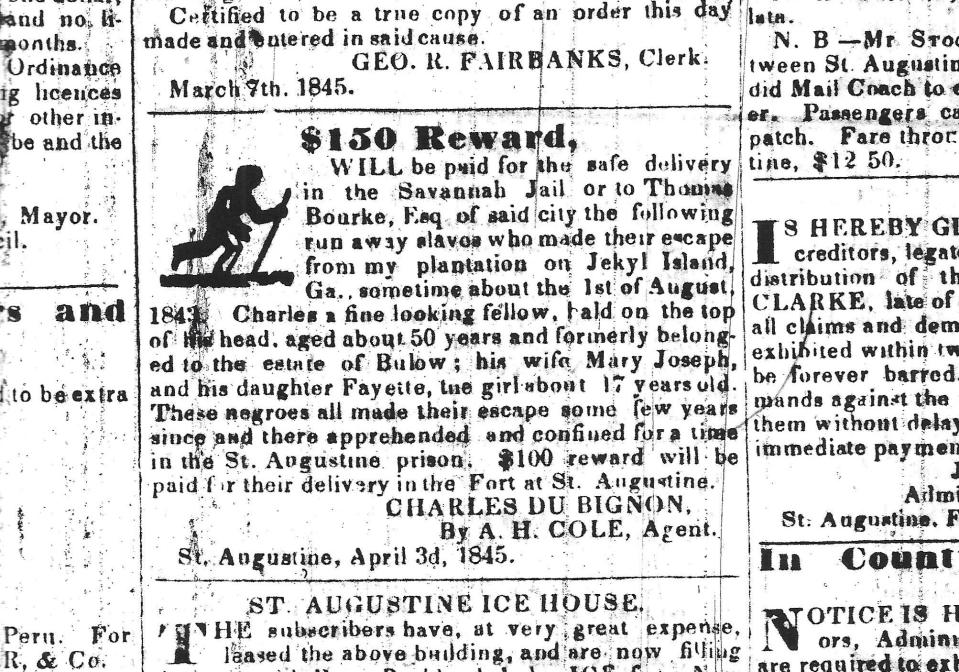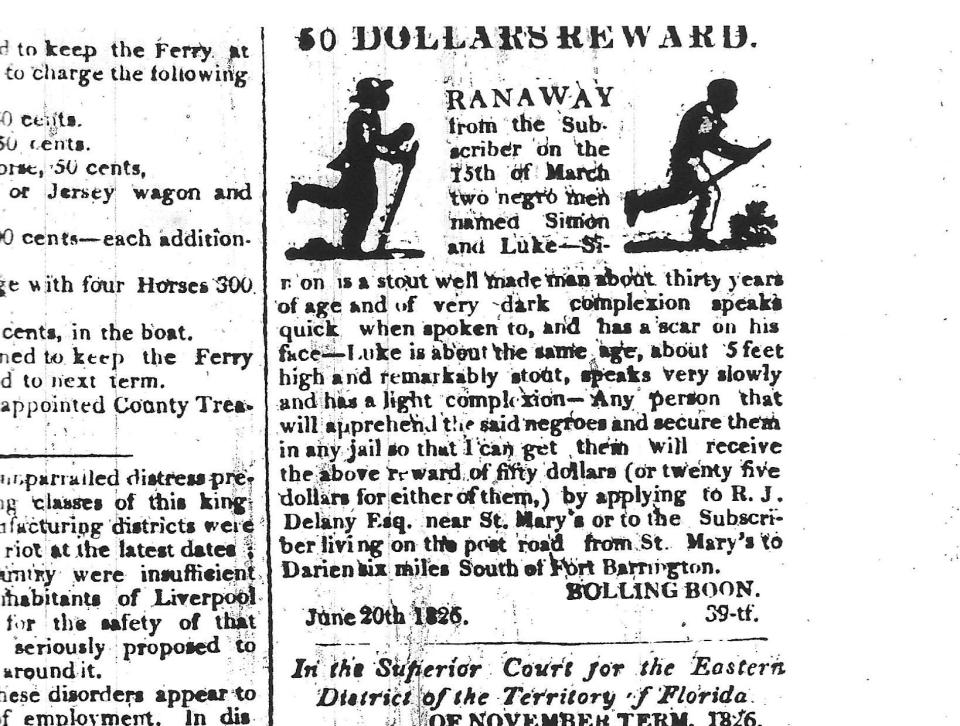19th-century ads featured groceries, ice, escaped slaves | SUSAN PARKER
The newspapers of St. Augustine's early American decades (1820s-1840s) gleefully reported election wrangles and insults. There was the short-lived Florida Gazette, the East Florida Herald, the Florida Herald, and the Florida Herald and Southern Democrat. Last week's column described a few of those elections.
Laid out next to the rousing campaign stories were the notices and advertisements of the day. Some sorts of ads still appear in our newspapers. Others have disappeared as the times changed and the old ads might well surprise or even startle 21st-century readers.

The "grocery-store" ads announced the arrival of foods, not weekly specials. In 1826 the St. Augustine firm of Robiou & Pearson offered beef, pork, butter in kegs, pilot bread, anchovies in bottles, rum, whisky and cordials. As today the store sold non-edibles – soap, candles, brushes and bellows and hats. The store also carried gunpowder and shot. The St. Augustine Ice House offered "pure Rockland Lake ice from New York." Ice purchases were for cash only, no credit. Ice was delivered very weekday morning between 6 and 7 a.m. and at 6 p.m. on Sunday afternoon.
James Riz advertised his rates for his ferry which crossed the St. Johns River from Picolata. The ferry was pricey. A foot passenger paid 50 cents and a man and a horse, 150 cents – quite a sum at that time. There were several different fees depending on the sizes of wagons and the number of horses in the wagon team.
As today, there were legal notices of mortgage foreclosures, courthouse sales and the probate of estates. There were ads soliciting bids for government contracts. In 1823 the U.S. Army Post Quartermaster in St. Augustine advertised for 200 cords of firewood of "good merchantable oak."
The newspapers also published legal notices of pending city ordinances. Many of the municipal ordinances dealt with matters of animal control. Ads frequently dealt with ordinances to regulate the public market in the plaza, especially the sanitary conditions for the sale of meat. And, in May of 1845 the city notified it would consider the regulations for a nine-pin bowling alley.
St. Augustine's very first newspapers contained no images. Within a few years, however, pictographs appeared. The icon of small, generic houses signaled a dwelling for sale. A ship icon headed the notices of arrivals and departures of vessels at the St. Augustine port and usually included a list of passengers. A regular feature of these newspapers was the "List of Letters" which remained unclaimed at the St. Augustine post office. The list warned that after three months any unclaimed mail would be sent to the Dead Letter Office in Washington, D.C.
Surely the ads for escaped slaves would be the most surprising items for today's reader. These ads caught readers' attention in the 1800s with silhouettes of men running. For example, in March 1826, an advertiser was seeking the return of "two negro men named Simon and Luke."

The ad described the men. "Simon is a stout well- made man about thirty years of age and of very dark complexion speaks quick and has a scar on his face." The other man: "Luke is about 5 feet high and remarkably stout, speaks very slowly and has a light complexion." The advertiser advised that any person apprehending the men would need to "secure them in any jail so that I can get them." A reward of 25 dollars would be paid for each man.
In April 1845, a month after Florida became a state, Charles Du Bignon first advertised for the return of a family that had escaped from his Jekyll Island (Georgia) plantation two years earlier. The advertisement listed Charles about 50 years of age, his wife (no age given) and the 17-year-old daughter Fayette. A reward of $100 was offered for delivery of the family to the fort in St. Augustine or $150 if the three were delivered to the Savannah jail.

Susan R. Parker holds a doctorate in colonial history.
This article originally appeared on St. Augustine Record: St. Augustine history: 19th century ads featured more than groceries

